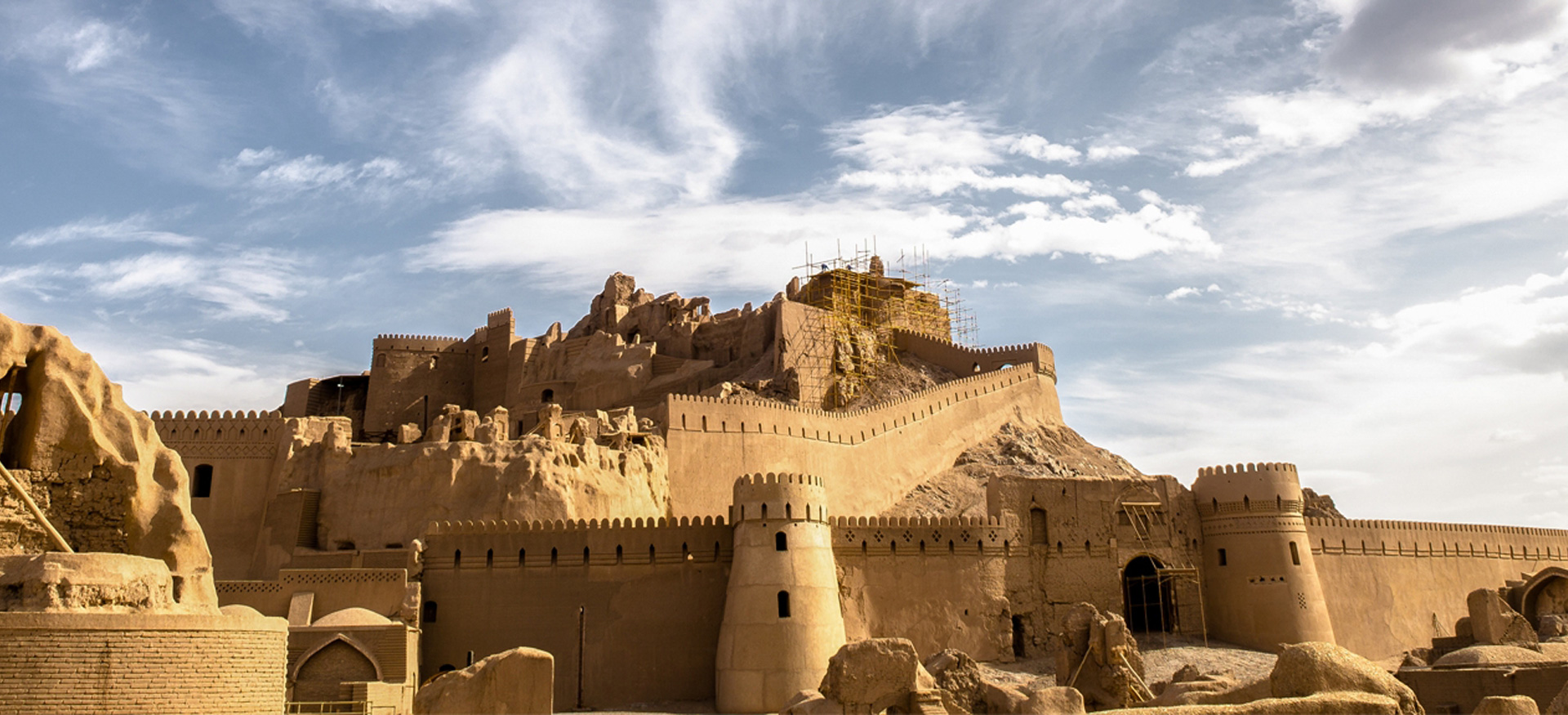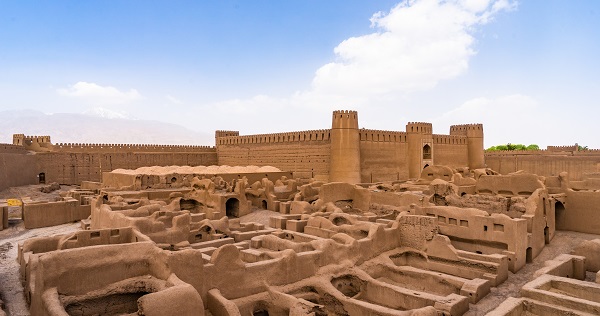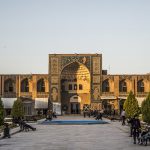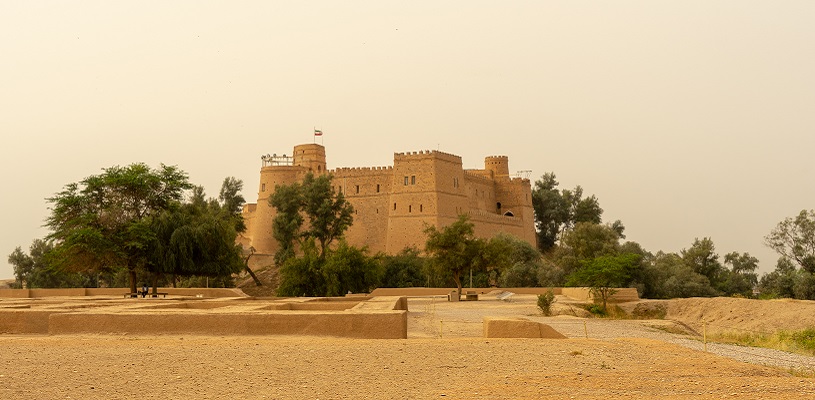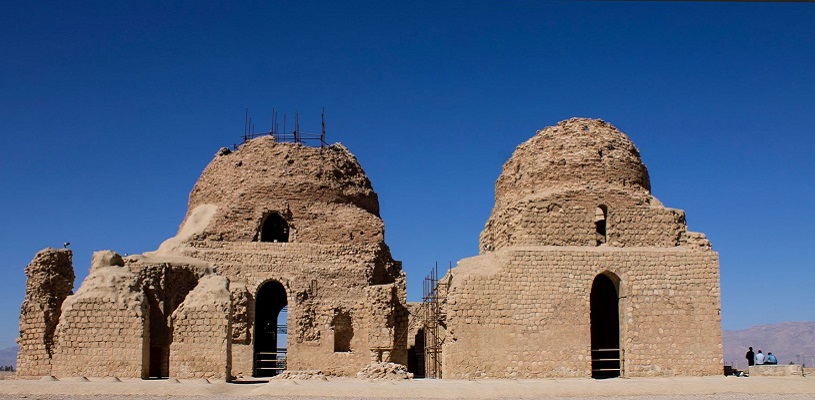
Arg-e Bam (Bam Citadel) | Kerman, Arg e Bam Iran
Bam, one of the ancient cities in Kerman Province, is several thousand years old. This city owes its popularity to Arg-e Bam, also called Bam Citadel. This fortified medieval town was home to people of all social ranks. Arg-e Bam is a great representative example of an adobe structure. Thus, UNESCO inscribed it on the World Heritage List as the world’s largest adobe construction before the 2003 earthquake. Following this devastating earthquake, Arg-e Bam was restored and it was reborn like a proud Phoenix. Let’s walk in the streets of this ancient city to touch the antiquity.
Contents
- 1 Why Visit Arg-e Bam?
- 2
- 3 Arg e Bam Iran – A Citadel From the Depth of History
- 4 Arg-e Bam As A Trading Center on the Silk Road
- 5 The Legend of Arg-e Bam and Haftvad King
- 6 Arg e Bam – How Bam Citadel Looks
- 7 Bam Citadel – Governor’s Quarter
- 8 Bam Citadel – Common People’s Quarter
- 9 Wonders of Arg-e Bam
- 10 Bam Citadel – The Well of Wishes
- 11 More about Arg-e Bam
- 12 Like to visit Arg-e Bam?
- 13 Bam Citadel (Arg-e Bam) Tour
- 14 Bam Citadel on Map
Why Visit Arg-e Bam?
- UNESCO has inscribed Arg-e Bam on the list of World Heritage.
- It is the most well-known tourist attraction in Kerman.
- Arg-e Bam is an extraordinary adobe construction, which was considered as the largest adobe architectural structure in the world prior to the 2003 earthquake.
- Arg-e Bam is an exceptional example of a Persian medieval city town.
- It features amazing architecture as well as intelligent techniques of engineering.
- Arg-e Bam is mentioned in Shahname (the Persian book of the kings) and an absorbing story is narrated about it.
Arg e Bam Iran – A Citadel From the Depth of History
The initial foundation of Arg-e Bam is controversial. Some believe that this citadel dates back to the Achaemenid era (550-330 BC). Yet others argue that this unique construction dates from Parthian era (247-224 BC). This colossal citadel is a great historical museum, showcasing Persian architecture of various eras from over twenty centuries. However, a great deal of structures were constructed during the time of Timurid (1370–1506 AD) and Qajar (1789-1925 AD) Empires. Some architectural elements such as mosques date back between Samanid (875-900 AD) and Seljuk (1796-1925 AD) eras. Furthermore, towers on either side of the main entrance gate date from Safavid Empire (1501- 1736 AD). Arg-e Bam has played a vital role in the history of Iran and kept intriguing stories of the kings’ and princess’ braveries. An alluring example is the story about Arg-e Bam in Shahname.
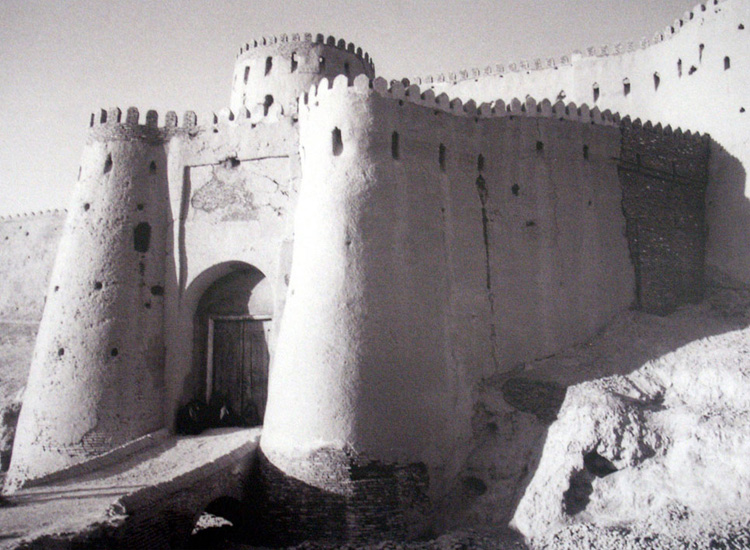
Arg-e Bam main entrance
Arg-e Bam As A Trading Center on the Silk Road
Silk Road was an ancient trade route with multitude of branches crossing a variety of cities. Merchants and caravans transported trade goods from various nations, including China, Central Asian countries, Iran, and Europe along this route, which stretched from China to the heart of Europe. Bam Citadel was considered as one of the significant crossroads along the Silk Road that passed through the south of Iran. Indeed, Arg-e Bam functioned as a trading center and a protective structure for caravans and merchants.
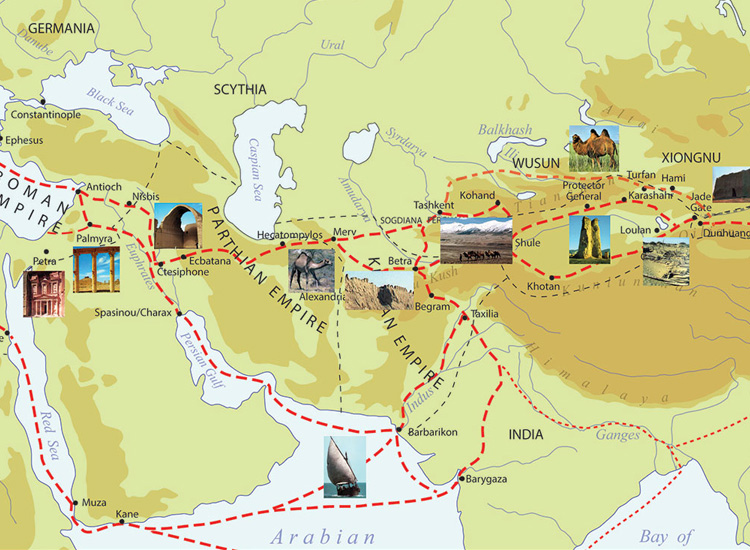
ancient silk road
The Legend of Arg-e Bam and Haftvad King
The story is a legendary narration of the conquest of king Ardashir, the first Sassanid king (242-224 AD). According to Ferdowsi, the author of Shahname, there was a king called Haftvad (literally meaning seven boys). In fact, he was a poor king, ruling a vast region from China Sea to Kerman. He had seven sons and a daughter. One day her daughter saved a worm she found in her apple and this worm brought them luck. The king became so rich and powerful that no one could resist him. As king Ardashir heard about him he fought with him and finally defeated him and took over. In the end, the invading conqueror pierced the worm with a metal rod after storming the castle. Consequently, the worm burst, hence the place took the name Bam (meaning burst).
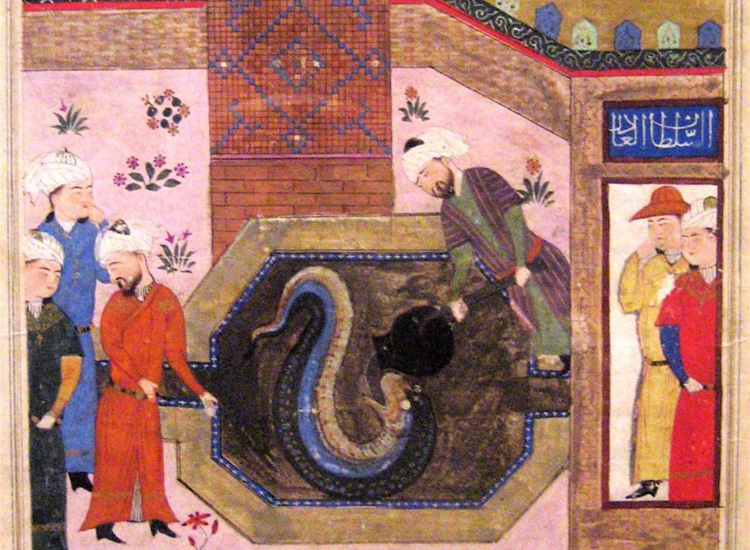
The legend of Haftvad about Arg e Bam Iran
Arg e Bam – How Bam Citadel Looks
Arg-e Bam is one of the largest ancient fortresses in Iran. The citadel, with an area of about 18 acres, is the size of a small town and is almost rectangular in shape. Also, several walls measuring 6 to 7 meters high and 1815 meters long, 29 watchtowers, and a moat (hole) measuring 5 meters deep that surrounds it, strengthen the defensive structure of the citadel and make this citadel impenetrable. Particularly, nested walls, built around the center, separate various sections of the citadel. In general, this citadel consists of two main parts: the governor’s and common people’s quarters.
Bam Citadel – Governor’s Quarter
As you enter Arg-e Bam from the main entrance gate (south gate), you will immediately notice the hilltop governor’s quarter lying in the north of the citadel. Chiefly, the governor’s quarter comprises a military fort, four-season edifice, military barracks, water wells, stables (with a capacity of 200 horses in the center), main tower, ruler’s residence, bath, residence of the barracks’ director (known as windmill), entrance gate, and fortifications.
The four-season edifice is a three-story governor’s palace, where the ruler of the time reviewed and passed civil orders and decrees. Furthermore, the governor’s in Arg-e Bam quarter includes several stone ramparts (defensive walls), which are about 7 meters high. In the eastern side of the governor’s quarter and north of the castle, in a neighborhood known as Kotekerm (worm house), the remains of the second gate of the citadel stand. Evidently, this gate has been out of use or blocked after the construction of the castle fence. This gate is considered as testimony to the Haftvad legend from the epic book, Shahname.
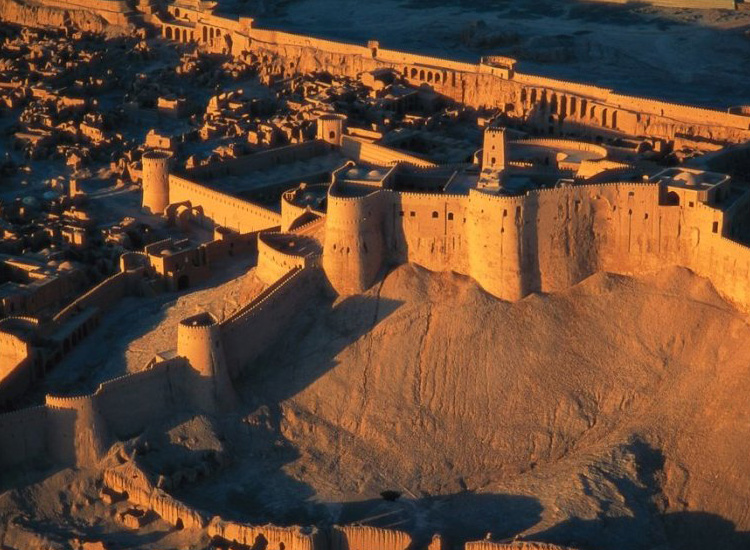
Governor’s quarter in Arg e Bam
Bam Citadel – Common People’s Quarter
The common people’s quarter stretched along the governor’s quarter and a long fence separated these two quarters from each other. The common people’s quarter in Arg-e Bam consisted of the entrance, the main gate of the city, the main route connecting the entrance of the city to the fort and bazar, the grand mosque, the Zurkhaneh (a traditional place to train warriors in ancient Persia), Sabats (a structure built between the opposite buildings on both sides of a narrow street), the House of Judah, Tekiyeh Square, the Prophet Mosque, the bath, the school or Khaneghah (building designed for the gatherings of Sufi brotherhood), stables, Mirakhor building and residential neighborhoods with about 400 houses.
Among these houses, three different architectural styles are to be found: small houses with two or three rooms for the poor class; houses with a larger area and three or four rooms, some of which have porches, for the middle class; and luxurious houses with more rooms, a large courtyard and a stable for animals, which are rare and scattered in different areas of the citadel. The House of Sistanis and the House of Jews are two examples of such luxurious houses. Though, following the 2003 earthquake, much of Arg-e Bam’s defensive walls and governor’s quarters were reduced to debris.

Bam Citadel – Common people’s quarter Photo
Wonders of Arg-e Bam
The majestic appearance of this citadel is suggestive of an initial solid plan for its construction. In other words, the builders and engineers of Arg-e Bam had visualized the final shape of the citadel very vividly from the beginning. The reason for such a claim is that structures built in different stages were consistent and compatible with each other in terms of their architecture.
Another wonder of this ensemble is its wind towers. In fact, the architecture of the luxurious houses was such that each building featured a wind tower. The function of the wind towers was to conduct wind from various directions into the building. A small pond was built in the path of the wind to reduce the temperature and eliminate desert dust inside the building. It is worth mentioning that the main gate of the city was located such that it could direct the strong winds out of the citadel.
Bam Citadel – The Well of Wishes
One of the major buildings of Arg-e Bam is its mosque, which is also the largest building in the citadel. This mosque is also popular for a well inside it, called Sahib Al-Zaman. The inhabitants of the town believed that they could realize their dreams by lighting candles and making vows in the mosque on Mondays and Fridays.
More about Arg-e Bam
Attractions Near Arg-e Bam
The city of Bam enjoys a global reputation as a city full of palm gardens. One of the attractions of this hot desert city is visiting its palm gardens during the harvest, which usually begins in July and lasts until September. Other attractions of Bam are two beautiful and mountainous villages of Dehbekri and Darijan. In particular, rivers, springs, and the beautiful nature of these villages make them desirable places for visitors especially in the hot seasons of the year.
When to Visit Arg-e Bam
Since the city of Bam is located in the desert and a hot region of southeastern Iran, the best seasons to visit Arg-e Bam are autumn, winter and early spring.
Visit Hours
In Spring and Summer from 07:30 a.m. to 07:00 p.m.
In Autumn and Winter from 07:30 a.m. to 05:00 p.m.
Restaurants Near Bam Citadel
Atavich Bam Restaurant
Tochal Restaurant
Kebab House Restaurant
Restaurant and Cultural Hall of Bam
When to Visit Arg-e Bam
Like to visit Arg-e Bam?
Then hop aboard our Arg-e Bam, Rayen Castle, and Mahan excursion tour.

